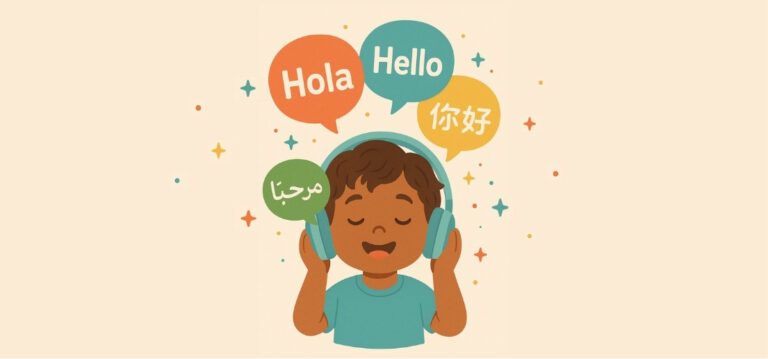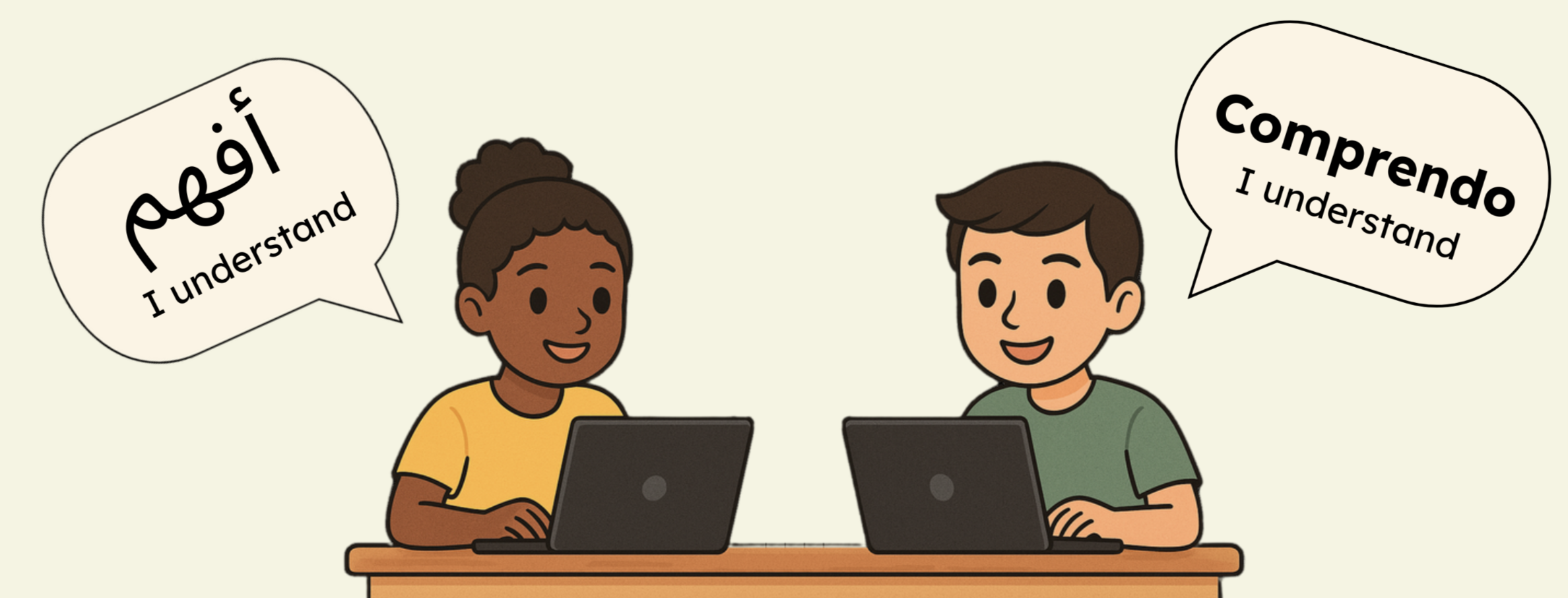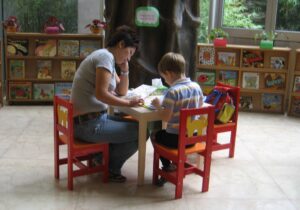
Anyone who teaches knows one of the biggest challenges is getting kids to listen!
But listening is more than simply “not talking.” Listening means actively creating meaning from what is being communicated.
In fact, according to researchers, “active listening” is one of the most overlooked skills of early literacy development. Listening precedes reading. Early readers first need to be able to understand enough of what they hear in order to make sense of the content they encounter later as readers.
Listening actually forms the foundation for language development, reading comprehension, and ultimately effective communication. Before children learn to read or write, they learn by listening to stories, songs, conversations, and instructions.
Later, as children start to read, listening exposes them to important new language structures and broadens their vocabulary while also introducing new ideas.
So, rather than something that is “expected”, listening should be part of active, planned exercises that are included in daily instruction in order to set the stage for success in reading, writing, and more advanced oral expression.
What Researchers Say About Listening Skills
1. Builds Language and Vocabulary
2. Improves Reading Comprehension
Listening and reading go hand in hand: children who listen well are better prepared to become successful readers. Studies show that children with strong listening comprehension tend to become better readers later on (Lepola et al., 2012).
For example, listening to stories teaches children how narratives are structured (beginning, middle, and end) and helps children predict outcomes, make connections, and understand cause-and-effect relationships. Listening also supports phonemic awareness, a crucial skill for decoding words when learning to read.
3. Enhances Focus, Memory, and Cognitive Development
Listening requires attention and concentration which helps children develop their ability to focus better and build working memory. These skills are essential for academic learning, problem-solving, and effective communication.
For example, when children listen to a story and then retell it, they practice recalling important details and sequencing events. Listening to instructions and following them helps children develop executive function skills.
4. Encourages Imagination and Creativity
Listening to stories also allows children to visualize the characters, settings, and events in their own minds which helps to spark creativity. Unlike watching television, which provides visual input, listening to spoken language encourages children to create mental images and imagine their own possibilities.
Tips for Developing Listening Skills in Children
It doesn’t require complicated activities to build listening skills! Simple, engaging interactions spread throughout the day can have a significant impact. Some suggestions:
1. Read Aloud Every Day
Reading aloud is one of the most powerful ways to develop listening skills:
✔ Choose books with rich language and engaging stories.
✔ Ask questions to encourage active listening such as: “What do you think will happen next?” or “How do you think the character feels?”
✔ Select stories that intentionally introduce children to new words and sentence structures.
✔ Expose children to rhymes, rhythms, and language patterns in spoken language.
2. Play Listening Games
For younger children, make listening fun with interactive games:
✔ “Simon Says” – Helps children listen carefully and follow directions.
✔ “I Spy” – Encourages children to focus on spoken clues to find objects.
✔ Rhyming and rhythm games – Nursery rhymes, clapping games, and call-and-response songs not only build listening skills, but also enhance phonemic awareness.
3. Model Active Listening
Children learn by example. When you model good listening habits, it will help them develop their own listening skills. Modeling active listening also teaches children that listening is important and valued.
✔ Make eye contact and respond when they speak.
✔ Repeat or paraphrase what they say to show understanding.
✔ Encourage back-and-forth conversations, asking open-ended questions.
Developing strong listening skills in young children is one of the best ways to prepare them for success in school and later in life. Strong listening skills not only establish a strong foundation for literacy and language development, they also strengthen a student’s ability to focus, and think creatively.
By being better listeners, they’ll become more confident communicators with a bonus of enhanced social skills as well!
Cynthia Harrison Barbera
Cynthia Harrison Barbera is President and CEO, StoryWorld International. She served as VP Educational Technology for Scholastic and is the recipient of two US Presidential awards for educational programs. An Emmy-award winner for a television series on education, she has taught English to native-speakers and ELL students in the US and overseas.
References:
Catts, et al, 2006; Gough & Tunmer 1986: Lepola, et al, 2012; Lervag, et al, 2017; Nation et al. 2010; Neuman & Wright, 2014; Scarborough, 2001; Snow, 2010.







